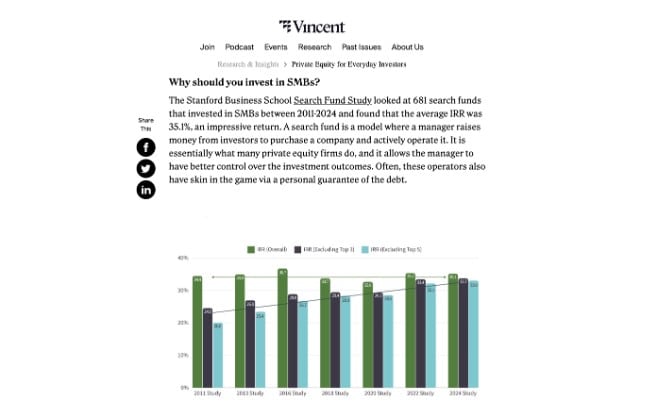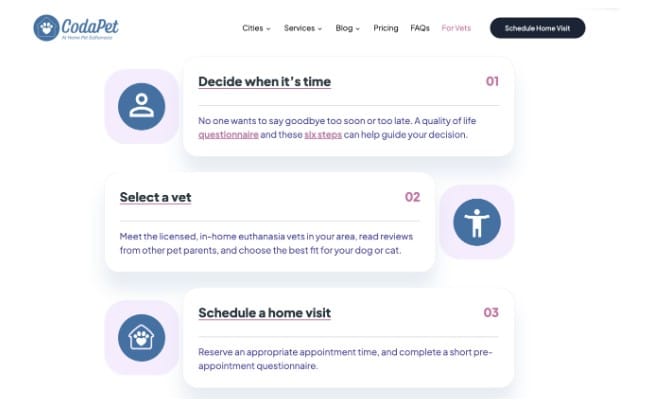Brand trust plays a major role in converting customers, yet many businesses still struggle to earn their prospects’ confidence.
In some ways, this isn’t that big of a surprise. Consumer research suggests that today’s buyers have decreasing confidence in governments, media outlets, and brands. They’re also more careful than ever in deciding what businesses they put their faith in (and spend their hard-earned money with).
But building user trust doesn’t have to be rocket science. In fact, investing in website content could be the key to inspiring your target audience to form a positive perception of your brand. Doing so would effectively encourage them to choose you over your competitors. Moreover, it could help turn them into loyal customers who’ll buy more and champion your business for years to come.
Without further ado, here’s everything you need to know about the role of website content in building user trust, plus some effective tips on how to make it happen.

Source: depositphotos.com
High-Quality, Insightful Content Establishes Expertise
One of the biggest benefits trust-building content offers to your brand is that it can establish your reputation as an industry expert.
Ultimately, today’s consumers demand an exceptional experience. They want brands to understand, predict, and meet their unique needs. And they want effective solutions that will remove their pain points quickly and efficiently.
But most importantly, they want to know they’re in good hands when shopping.
Recent surveys suggest that brand expertise and experience could be the key to creating enjoyable (and conversion-inspiring) shopping experiences.
According to the latest findings from Edelman — the international authority on brand trust — consumers are putting more faith than ever in scientists and experts. Plus, scientific research demonstrates a direct correlation between positive expert reviews and purchase intent.
With this in mind, one of the best things you can do to elevate your brand’s trustworthy reputation is to invest in content to demonstrate your team’s experience and expertise.
This can include a variety of formats.
For example, Vincent Labs’ article about Private Equity for Everyday Investors provides readers with in-depth, relevant, educational value on everything investors need to understand about the benefits of investing in SMBs. The information is extensive and evidence-backed. It includes real-life examples. And, most importantly, it shows readers that they can rely on the brand to receive high-quality guidance on their journey to financial freedom.

Source: withvincent.com
Alternatively, you might produce website content that presents your prospects with similar trust-building value.
Original research papers, industry insights, surveys, case studies, and reports all offer exciting opportunities to demonstrate your team’s expertise and to position your brand as an entity consumers can count on to remove their pain points.
If you feel like your in-house team isn’t the best at producing content, don’t write off this strategy just yet. Even something as simple as collaborating with the right guest authors via a blogging workflow app like Outreachboard can help you present web visitors with high-quality, educational, and trust-building content that will encourage readers to perceive your business as a credible industry authority they’d be happy to buy from.
Trust Requires Benevolence — Content Can Help Provide It
If you look at the elements of trust (toward a person or organization), you’ll discover that the feeling rests on three base prerequisites. These include ability, integrity, and benevolence.
Now, proving your competence can be as “simple” as providing effective solutions to your target audience’s needs. However, to convince prospects that they can genuinely trust your business, it’s also crucial to establish your benevolence.
In other words, you need to show potential customers that you have their best interests at heart—even if they choose not to convert.
Fortunately, this is something you can do with ease. All you have to do is make your trust-elevating website content easily accessible for free.
For instance, by dedicating your company blog to presenting your audience with helpful, cost-free information, you can show that your primary objective isn’t to sell your products and services. Instead, it’s to help your prospects accomplish their goals, even if it offers nothing in return to your business. Take a look at how Smash.vc did that with its Top Independent Sponsor Conferences:

Source: smash.vc
Of course, you might feel like your website content needs to play a more active role in the sales funnel. In this case, you can still demonstrate your dedication to helping your audience, but also ensure your website content helps you toward your business goals.
For instance, trust-building content doesn’t have to be entirely “free.” You can employ it along a lead-generation mechanism, as Tidio did with its ebook below. This will still present your prospects with access to relevant, trust-building value. But it will also help you generate leads, whom you can nurture into customers.

Source: tidio.com
Content Can Help Provide Some Much-Needed Transparency
The truth about earning consumer trust is that it’s quite difficult to do in a world run by profits. Why? Because today’s consumers constantly feel like they’re being advertised to.
According to a 2023 survey:
- 70% of consumers consider conversion-oriented content to be annoying.
- 72% say that bad advertising negatively impacts their CX.
- 66% think that annoying or intrusive ads reduce brand trust, and;
- 86% will start ignoring sales-oriented content when it’s used too often.
So, when exploring methods to elevate your brand’s reputation (and conversion potential) with website content, consider focusing on transparency and authenticity instead of sales.
For instance, content that describes the way your services work (and whether they’re the right or wrong choice for a prospect) can be of great help in establishing your brand as a trustworthy entity.
This is precisely what CodaPet does with the How It Works section on its homepage, where it guides visitors through the process of finding the right solution for their ill/elderly pets.

Source: codapet.com
Using content for transparency can be equally effective toward the lower end of the sales funnel.
For instance, The Slow Label includes a Full Transparency section on each of its product pages, giving shoppers some much-needed insights into how and where the garments are made and how much they actually cost.

Source: theslowlabel.com
Tap Into the Power of Social Proof
Earning your audience’s trust via web content evidently requires you to combine your branding and content marketing strategies. Nevertheless, it’s important to note that the credibility of content hugely varies based on who it was produced by.
Over the past few years, research has shown that branded content, despite being a great investment, isn’t always the best choice for building trust. Instead, today’s consumers prefer to collect their pre-purchase information directly from fellow shoppers.
With this in mind, one of the best ways to establish your organization’s credibility (and encourage future customers to trust your business) is to employ authentic user-generated content throughout your website.
What’s great about this tactic is that it can be as simple or as complex as you want it to be.
On the one hand, you can do something as straightforward as Eden Emerald Buyers Agent and dedicate sections of your website and homepage to positive (and detailed) customer feedback.

Source: eebuyersagent.com.au
On the other hand, you could source other instances of UGC and position them throughout your website in a way that aligns with your prospects’ needs during the buyer’s journey.
For example, you can embed user-generated visuals (maybe sourced from social media) on your product pages. Take a look at how Glossier did it below.

Source: glossier.com
Strengthen Your Value Propositions and Remove Conversion Obstacles
Sometimes, the best way to use website content to build trust isn’t to highlight your brand’s credibility and competence. Instead, it’s to reassure your audience that they’ll receive what they need when shopping with your brand.
If you think about it, this effect is well worth going after. After all, the average cart abandonment rate is above 70% as of 2023. And people’s main reasons for abandoning their purchases have to do with a lack of brand trust or transparency.
So, if you’re looking to leverage web content to build trust and boost conversions, why not explore ways to support your value propositions and remove some of your prospects’ main conversion obstacles? After all, there are numerous effective ways to achieve these effects.
For instance, something as simple as placing trust signals in the close vicinity of your unique value proposition — like Topview did — can be a great method to convince web visitors to give your brand a chance.

Source: topview.ai
Or, you could go a step further and bravely address a reason why some of your web visitors wouldn’t want to convert.
For instance, GetSafe knows that its target audience isn’t big on wearable technology. That’s why it uses the hero section on its homepage to point out that its medical alert systems don’t require users to wear a clunky button.

Source: getsafe.com
Finally, don’t underestimate the trust-building effect of a user-friendly quality guarantee — similar to the one emphasized on the Brooklinen ecommerce site. After all, showing your audience that you stand behind your products isn’t just a way to get them to trust your brand. It’s also an effective way to remove a common conversion obstacle, helping you boost sales all the while creating a standout customer experience for your prospects.

Source: brooklinen.com
Final Thoughts
Using content to earn your prospects’ trust is an exceptional way to shape your brand’s reputation.
After all, the right resources won’t just demonstrate your business’ positive track record of meeting (and hopefully exceeding) consumer demands. They can also establish you as a go-to in your industry. Plus, they can help differentiate your business from competitors.
The tactics discussed in this guide are all excellent ways to elevate trust. And the best thing is, you can easily incorporate them into your content strategy. So, don’t hesitate to add these types of content to your website, as you’re guaranteed to see a boost in brand trust and (consequently) will have an easier time converting new customers as well.




